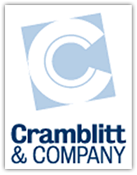Taming the SEO bully
September 2nd, 2010 | Comments Off on Taming the SEO bully
A friend recently posted this joke on Facebook: “How many SEO experts does it take to change a lightbulb, light bulb, bulb, lamp, light, eco-bulb, bulbs, fluorescent tubes?”
It was timely for me because I’ve been noticing lately that the fine art of headline writing is being reduced to long expository sentences weighted down by keywords. Made me think that a classic headline such as “Headless Body in Topless Bar” could end up like this: “Deceased Resident without Head Found in Exotic Bar and Lounge Establishment by New York City Police Department.”
It also reminded me of the laziest headline writer I’ve ever seen. He’d write his lead sentence, then use the opening five or six words for his headline. I don’t think he’s alive today. Too bad. His time has come courtesy of SEO.
Organizations that encourage writers to lard their headlines and lead sentences with key search terms are missing something very basic: People don’t want to read garbage. They want something that reels them in, captivates and excites them, makes them want to share with others.
Incredibly good content is the best magnet to bring people to your site and keep them there. If you don’t believe me, take a look at what your friends and colleagues pass along to you via twitter or Facebook. Bet it’s the content, and perhaps even the headline, that grabbed them.
This isn’t an either/or situation, of course. A good writer can make SEO and Great Content skip up the hill hand in hand and pick daisies together. Just make sure that SEO doesn’t get too arrogant and kick Great Content’s ass down the hill.
Tags: headlines, search engine optimization, SEO, writing
Posted in communication, PR and marketing, writing

